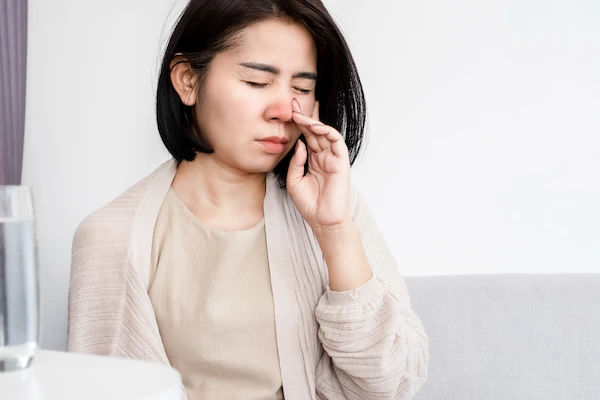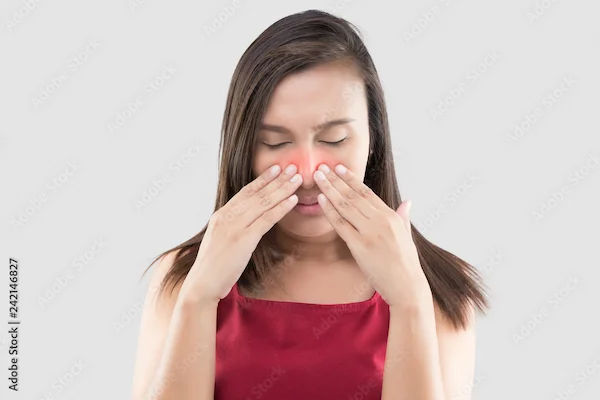Nebuliser: How It Works, Benefits, and Usage Tips
Your clear nebuliser guide for everyday respiratory care: how it works, benefits, safe use, cleaning, and FAQs—based on trusted medical sources.

Written by Dr. Siri Nallapu
Reviewed by Dr. Rohinipriyanka Pondugula MBBS
Last updated on 21st Nov, 2025

Introduction
If you or someone close to you lives with asthma, COPD, cystic fibrosis, or recurring chest infections, you may already have come across nebulisers. These devices play an important role in many home-based respiratory treatment plans, especially during flare-ups or when inhalers are difficult to use. This straightforward nebuliser guide explains what they are, how they work, who they can help, and how to use and maintain one safely. Because effective respiratory care can reduce symptoms and improve day-to-day comfort, understanding your device is an empowering step towards better breathing.
Nebuliser Guide: What a Nebuliser Is and How It Works
A nebuliser (also spelt nebuliser) is a medical device that converts prescribed liquid medicines into a fine mist that can be inhaled directly into the lungs. Nebulisers are commonly recommended for people who struggle with inhaler technique, experience severe symptoms, or need medicines that work best when delivered as an aerosol.Consult a Top General Practitioner for Personalised Advice FAQs
Core Parts
- Compressor or power unit (jet nebulisers) or vibrating mesh/ultrasonic element
- Medication cup
- Mouthpiece or face mask
- Tubing (jet nebulisers only)
- Optional filter
How does it work?
- Place the prescribed liquid medicine into the medication cup.
- The device converts the liquid into an aerosol using air pressure, vibration, or ultrasonic energy.
- You inhale the mist through a mouthpiece or mask, allowing the medicine to reach the airways more efficiently.
Common Types
Common types of nebulisers are:
- Jet nebulisers – Reliable, widely used, usually less expensive, but less portable and noisier.
- Mesh nebulisers – Compact, quiet, and fast; require careful cleaning and are more costly.
- Ultrasonic nebulisers – Quiet and efficient, but unsuitable for some medicines due to heat generation.
Benefits of a Nebuliser in Respiratory Care
Nebulisers are often used as part of a wider respiratory treatment plan.
Key Benefits
- Natural breathing technique – No need for coordinated inhalations, especially useful for young children or older adults.
- Helpful during flare-ups – Allows steady breathing even when short of breath.
- Delivery of certain medicines – Some antibiotics and mucolytics are formulated specifically for nebulisation.
- Mask option available – Ideal for infants and people who cannot use mouthpieces reliably.
Important Perspective
- Many people with asthma respond well to inhalers with spacers for everyday use and mild to moderate flare-ups.
- Nebulisers are tools for delivering medication and are effective only when combined with a clinician’s advice and a proper treatment plan.
Common Medicines Delivered by Nebuliser
Only use medicines prescribed by your healthcare professional. Common medicines delivered by a nebuliser are:
Examples of Nebulised Medicines
- Bronchodilators – e.g., salbutamol/albuterol or ipratropium to ease whistling, tightness, and shortness of breath.
- Inhaled corticosteroids – e.g., budesonide to reduce airway inflammation (rinse your mouth after).
- Hypertonic saline – Loosens thick mucus and supports clearance.
- Mucolytics – e.g., dornase alfa for specific mucus-related conditions.
- Inhaled antibiotics – e.g., tobramycin for certain chronic infections.
Possible Side Effects
Some possible side effects are:
- Tremor, fast heartbeat, or nervousness (bronchodilators).
- Dry mouth or bitter taste (anticholinergics).
- Hoarseness or oral thrush (steroids).
- Cough or throat irritation (saline solutions).
Contact your clinician if you experience unexpected or distressing effects.
Step-by-Step: How to Use a Nebuliser Safely
Follow your device manual and your clinician’s instructions. The step-by-step nebuliser use procedure is:
Before You Start
- Wash your hands thoroughly.
- Place the device on a clean, level surface.
- Inspect filters, tubing, and parts for cleanliness and wear.
- Measure your prescribed dose and add sterile saline if instructed. Never use tap water.
During the Treatment
- Sit upright in a comfortable chair.
- Attach the mouthpiece (preferred) or mask.
- Switch on the device.
- Seal your lips around the mouthpiece and breathe normally.
- Every few breaths, inhale slightly more deeply and hold briefly if comfortable.
- Fit the mask securely if using one.
- Gently tap the medication cup halfway through.
- The session usually lasts 10–15 minutes or until the mist slows.
After the Treatment
- Turn off the device.
- Rinse your mouth if you used steroids.
- Note your symptoms and follow your action plan if another dose is needed.
Cleaning and Maintenance to Prevent Infections
Good cleaning habits help prevent infections and prolong device life.
After Each Use
- Take apart the mask/mouthpiece and medication cup.
- Wash the parts in warm, soapy water.
- Rinse thoroughly and shake off excess water.
- Leave to air-dry completely on a clean paper towel.
Daily or As Recommended
- Disinfect using methods approved by the manufacturer.
- A commonly used approach is soaking clean parts in a vinegar–distilled water solution (1:3 ratio), then rinsing and air-drying.
- Use only sterilised or distilled water for rinsing.
Parts Care
- Do not wash the tubing; replace it when cloudy or cracked.
- Replace filters regularly according to the manual.
- Store the dried parts in a sealed, clean container.
Hygiene Tips
The hygiene tips are:
- Do not share nebuliser parts.
- If using the device while ill, nebulise in a ventilated area away from others.
Nebuliser vs Inhaler: Which Is Right for You?
Let us see the characteristic features of the nebuliser and inhaler, which work for your condition:
Nebulisers
- Pros: Minimal technique required, helpful during severe episodes, suitable for special medicines.
- Cons: Less portable, longer treatments, requires cleaning and power, can be costly.
Inhalers (often with spacers)
- Pros: Portable, quick, widely effective, low maintenance.
- Cons: Technique-dependent; some people struggle without a spacer.
What the Evidence Suggests
- For many people, inhalers with spacers can control symptoms effectively. Nebulisers are often used when inhalers are not suitable or symptoms become severe.
Choosing a Nebuliser: Practical Buying and Setup Tips
Selecting the right nebuliser can make treatments more effective and less disruptive to daily life.
Beyond the basic considerations of type, noise, and portability, it helps to think about how and where you will use the device most often. For example, someone who travels frequently or relies on treatments during work hours may benefit from a compact mesh nebuliser that fits easily into a bag. On the other hand, individuals who need frequent daily treatments at home may prefer a sturdy desktop compressor nebuliser with simple-to-replace parts and reliable long-term performance.
Another factor to consider is the ease of assembly. Some nebulisers have multiple small components, which can become frustrating if you are using the device several times per day. Choosing a model with fewer parts and clear markings can make setup and cleaning far smoother. Families may also prefer models with universal-size masks or mouthpieces, so replacements are easier to find.
Price is also an important aspect. While mesh nebulisers are generally more expensive, the convenience and speed they offer may justify the cost for some users—particularly those who struggle with longer treatment sessions. That said, disposable or reusable medication cups can affect ongoing expenses, so it is worth checking availability and cost before buying a device.
If you are unsure which model suits your needs, consider borrowing or testing a device at a clinic or pharmacy (where available). Seeing how loud it is, how quickly it delivers a treatment, and how intuitive the cleaning process feels can help you make an informed choice. Once you purchase your device, take time to label spare parts, read the cleaning instructions carefully, and set up a small storage area at home to keep everything organised. This helps you stay prepared during flare-ups and ensures your equipment lasts longer.
Safety Tips and When to Seek Medical Help
Safety tips and when to seek medical help include:
Safety Reminders
- Nebulise only prescribed medications.
- Never use essential oils or homemade liquids.
- Monitor how you feel before and after treatments.
- Keep children supervised at all times.
Seek Urgent Medical Help If You Experience
- Severe shortness of breath or chest pain
- Blue or grey lips or face
- Difficulty speaking in full sentences
- Symptoms that do not improve after rescue medication
- High fever or confusion
Call emergency services if symptoms are rapidly worsening.
Nebulisers in Everyday Respiratory Care
Using a nebuliser can be straightforward once you understand your device. It can ease symptoms during flare-ups and support long-term respiratory comfort when used correctly. Establishing a routine—cleaning parts, following prescriptions, and keeping equipment ready—helps you feel more confident in managing your condition. Over time, these small habits contribute to smoother breathing and fewer disruptions to daily life.
Conclusion
Nebulisers can play a valuable role in managing a variety of respiratory conditions, from asthma to chronic infections. With the right technique, good hygiene, and clear guidance from your healthcare team, they can help deliver medication effectively and support more comfortable breathing. Understanding how your device works, choosing the right model, and staying consistent with cleaning routines all contribute to safer and more reliable treatment at home. The more familiar you become with your nebuliser, the easier it is to incorporate it smoothly into your wider respiratory care plan.Consult a Top General Practitioner for Personalised Advice FAQs
Consult a Top General Practitioner for Personalised Advice FAQs

Dr. D Bhanu Prakash
General Practitioner
10 Years • MBBS, AFIH, Advanced certificate in critical care medicine, Fellowship in critical care medicine
Hyderabad
Apollo 24|7 Clinic, Hyderabad

Dr Syed Mateen Pasha
General Physician
2 Years • MBBS
Bengaluru
PRESTIGE SHANTHINIKETAN - SOCIETY CLINIC, Bengaluru

Dr. Johnson. S
General Practitioner
7 Years • MBBS MD(Preventive and social Medicine)
Pune
Apollo Clinic, Nigdi, Pune

Dr. Madhuri Sai Sreepada
General Practitioner
9 Years • MBBS
Hyderabad
BRIGHT SMILES MEDICARE & DENTAL CARE, Hyderabad
Dr. Karanam Kondalamma
General Practitioner
4 Years • MBBS
Hyderabad
KK Clinic, Hyderabad
Consult a Top General Practitioner for Personalised Advice FAQs

Dr. D Bhanu Prakash
General Practitioner
10 Years • MBBS, AFIH, Advanced certificate in critical care medicine, Fellowship in critical care medicine
Hyderabad
Apollo 24|7 Clinic, Hyderabad

Dr Syed Mateen Pasha
General Physician
2 Years • MBBS
Bengaluru
PRESTIGE SHANTHINIKETAN - SOCIETY CLINIC, Bengaluru

Dr. Johnson. S
General Practitioner
7 Years • MBBS MD(Preventive and social Medicine)
Pune
Apollo Clinic, Nigdi, Pune

Dr. Madhuri Sai Sreepada
General Practitioner
9 Years • MBBS
Hyderabad
BRIGHT SMILES MEDICARE & DENTAL CARE, Hyderabad
Dr. Karanam Kondalamma
General Practitioner
4 Years • MBBS
Hyderabad
KK Clinic, Hyderabad
More articles from Nasal congestion
Frequently Asked Questions
1) Is a nebuliser better than an inhaler?
A nebuliser is not automatically better—its suitability depends on your condition, your treatment plan, and how comfortable you are with inhaler technique. Many people find that inhalers with spacers are quicker, easier to carry, and just as effective for everyday symptom control. Nebulisers, however, have their advantages during severe flare-ups or when fatigue or breathlessness makes inhaler coordination challenging.
2) How long does a nebuliser treatment take?
Most sessions take around 10–15 minutes, but this varies with the medicine used, the volume in the cup, and the device type. Mesh nebulisers tend to be faster because they produce a consistent, fine mist with minimal effort. Jet nebulisers may take longer, especially if the medication cup is nearing replacement or the filter is clogged.
3) Can I put saline, essential oils, or other liquids in my nebuliser?
Only nebulise medicines and sterile saline prescribed or approved by your clinician. While essential oils are popular in aromatherapy, they are unsafe to inhale through a nebuliser and can irritate or damage the lungs. Similarly, homemade mixtures or tap water may introduce bacteria or minerals that can affect both the lungs and the device.
4) How often should I clean and replace parts?
Cleaning is essential after every use. Rinsing and air-drying prevent residue buildup and reduce infection risk. Disinfection should be done regularly, depending on the manufacturer’s guidance. Tubing must not be washed and is instead replaced on a schedule—usually every few months or sooner if it becomes cloudy or stiff. Filters also need periodic replacement, as a blocked filter can reduce airflow and compromise treatment quality.
5) Are nebulisers safe if I have a contagious respiratory infection?
Nebulisers produce aerosols that can remain in the air for a period of time, so it is important to use them safely when you are unwell. Choose a well-ventilated room, keep doors partly open, and avoid having others nearby during treatment. Afterwards, clean the device thoroughly and allow the room to air out.



